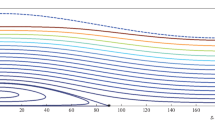Abstract
In this communication we present an analytical model for the restricted three-body problem, in the case where the perturber is in a parabolic orbit with respect to the central mass. The equations of motion are derived explicitly using the so-called Global Expansion of the disturbing function, and are valid for any eccentricity of the massless body, as well as in the case where both secondary masses have crossing orbits. Integrating the equations of motion over the complete passage of the perturber through the system, we are then able to construct a first-order algebraic mapping for the change in semimajor axis, eccentricity and inclination of the perturbed body.
Comparisons with numerical solutions of the exact equations show that the map yields precise results, as long as the minimum distance between both bodies is not too small. Finally, we discuss several possible applications of this model, including the evolution of asteroidal satellites due to background bodies, and simulations of passing stars on extra-solar planets.
Similar content being viewed by others
References
Babadzanjanz, L. K. and Brumberg, V. A.: 1988, 'Influence of a hyperbolic flyby of a small mass on the orbital evolution of a massive binary', Celest. Mech. 41, 313–321.
Beaugé, C.: 1996, 'On a global expansion of the disturbing function in the planar elliptic three-body problem', Celest. Mech. Dyn. Astr. 64, 313–349.
Beaugé, C. and Michtchenko, T.: 2003, 'Modeling the high-eccentricity planetary three-body problem', M.N.R.A.S. 341, 760–770.
Beaugé, C., Roig, F. and Nesvorný, D.: 2002, 'Effects of planetary migration on natural satellites of the outer planets', Icarus 158, 483–498.
Brouwer, D. and Clemence, G. M.: 1961, Methods of Celestial Mechanics, Academic Press, New York.
Brumberg, V. A., Ivanova, T. V. and Tarasevich, S. V.: 1986, 'Orbital evolution of massive close binaries under the influence of small bodies'. In: K. B. Bhatnagar (ed.), Space Dynamics and Celestial Mechanics, Reidel, Dordrecht, p. 181.
García-Sánchez, J., Weissman, P. R., Preston, R. A., Jones, D. L., Lestrade, J.-F., Latham, D. W., Stefanik, R. P. and Pardedes, J. M.: 2001, Astron. Astrophys. 379, 634–659.
Henon, M. and Petit, J. M.: 1986, Series expansions for encounter-type solutions of Hill's problem. Celest. Mech. 38, 67.
Nesvorný, D., Roig, F. and Ferraz-Mello, S.: 2000, Close approaches of trans-Neptunian objects to Pluto have left observable signatures on their orbital distribution. AJ 119, 953–969.
Author information
Authors and Affiliations
Rights and permissions
About this article
Cite this article
Beaugé, C. The Parabolic Three-Body Problem. Celestial Mechanics and Dynamical Astronomy 88, 51–68 (2004). https://doi.org/10.1023/B:CELE.0000009382.85594.d4
Issue Date:
DOI: https://doi.org/10.1023/B:CELE.0000009382.85594.d4




